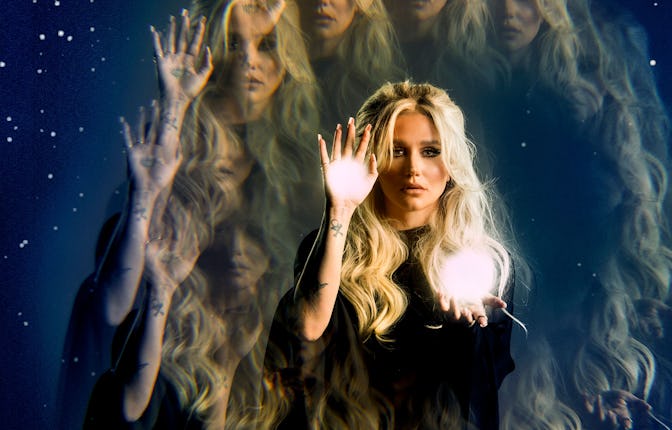Kesha’s new career as a ghost hunter is going great
‘Conjuring Kesha’ is a delightfully chaotic docuseries following the singer and her friends as they explore some of the most haunted places in America.

It’s unclear who the target audience is for paranormal docuseries. By and large, the genre is a boring collection of repetitive television schlock. It’s always the same premise: people tinkering with sporadically “functioning” ghost hunting equipment in creepy old abandoned buildings where a kid got killed or whatever. Typically, the people hosting these docuseries are quirky small town ghost hunters, not pop superstars. Which is what makes Discovery+’s new show, Conjuring Kesha, a curious addition to the space.
Hosted by, you guessed it, Kesha, the show’s premise is straightforward. In each episode, Kesha and another famous person explore a new, supposedly haunted location. Kesha introduces herself as someone whom when she’s not on stage “is exploring her connection to the supernatural.” And while she claims to be way into spooky stuff — she said in 2012 that she fucked a ghost — on her show she is always the first person to leave when things get real. In the first two episodes, much time is devoted to the camera crew chasing after Kesha as she hurriedly walks away yelling “fuck this.” But that’s the charm of Conjuring Kesha: it’s a show that takes its subject matter seriously enough, with an approach that’s not serious at all.
In the series premiere, Whitney Cummings joins Kesha at Brushy Mountain State Penitentiary in Tennessee. Rumors of hauntings at the prison — where 10,000 inmates are said to have died between its founding in 1869 and closure in 2009 — are widespread. The duo meet with a former warden and two women with ties to the property owner. The warden tells of a prisoner who had his throat slit from ear to ear, and the women regale the duo with stories of possessions and “the creeper,” a demon who slithers around on all fours.
Obviously the pair need to bring in a demon hunter, so he comes along as well (one device the show uses smartly is introducing as many ancillary people as possible to amp up the intrigue). He presents the girls with a bunch of ghost hunting gadgets and gizmos, and sets them up in the reportedly most haunted rooms in the prison, then retreats to a control room, where he nervously watches the women on a CCTV. What happens next is perhaps the best scene to ever unfold on a ghost hunting show. Whitney Cummings gets drawn in by a spirit whom she believes is a trans woman. As Cummings is moved almost to tears at the plight that this spirit might have endured in her human life, the demon hunter pulls her out and reminds her that pulling on heart strings is precisely what a malevolent force would do to gain her trust. The whole thing ends with Kesha and Cummings saying “fuck this place” and storming off arm in arm to go have “so many drinks.”
But where the first episode showcases the batshit levels of absurdity the show is capable of, the second explores sentimentality. In the episode, indie darling Betty Who comes along to find out the secrets of an abandoned opera house, Antoinette Hall, also in Tennessee. The pair meet with members of the nonprofit who have purchased the space, but are having trouble with renovation plans because of an unfriendly spirit they call Mr. Nasty. When it’s revealed that the building sits directly on top of land once used in the Trail of Tears, Kesha and Betty bring in a local member of the Indigenous community to awkwardly teach them chants to sing in the basement. They then walk the opera house with an eerily on-point psychic who goads the two into singing “Amazing Grace” to appease the spirits. In the end it’s determined that Mr. Nasty was the owner, named Thomas, and he just wants due credit for his opera house. Kesha and Betty then sing the Native American chant again to close the circle. It’s 45 minutes of absolutely unhinged content and a delight to watch.
To be clear, Conjuring Kesha has zero point, but that’s what makes it so entertaining. There are no rules, just Kesha and friends (filming with a VHS camcorder while a professional camera crew film them, for some reason) playing around in dilapidated locales trying to scare themselves. The show, like Kesha’s music, is produced just enough while still not caring about the messiness of it all, like slick autotune over a chaotic party anthem — a winning formula for reality TV.